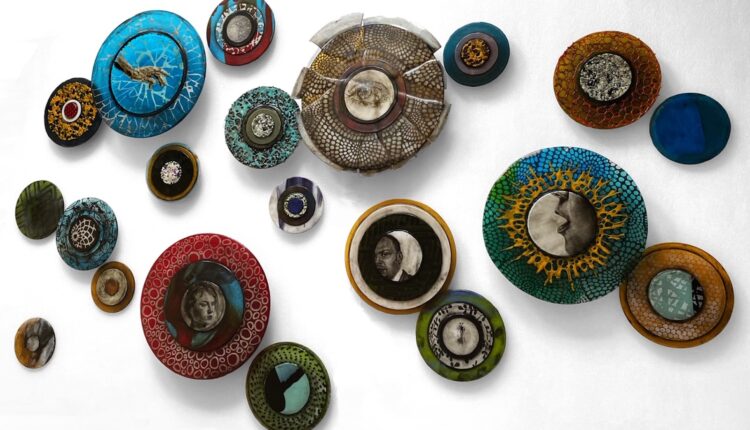
Art during COVID-19: Empty studios, canceled classes highlight the universal need for connections
COVID-19 shut down everything in the arts. At the Washington Glass School, my studio was strongly impacted, all classes were canceled, and all of our public art projects were put on indefinite hold as the DMV enacted lockdown restrictions, forcing us all into a new work environment.

Working alone in the studio is a different scenario from my usual studio routine, but it hasn’t clashed with my creative process. Working with glass in the quiet of a shuttered studio requires focused contemplation, allowing my signature “sgraffito” imagery — where I manipulate fine crushed glass powder into highly detailed imagery, and then fire the glass for a strong effect. My process in glass exploits the translucency and transparency of the medium: Glass can be unbelievably beautiful in one moment and convey a dark and brooding atmosphere the next.
Working on my art keeps me sane. In my most recent work, I’ve been integrating a series of sgraffito images within circular wall mounted glass panels — designed as abstractions of cells — and I now have an installation of over 30 glass panels. The intention of this evocative work is to convey the sense of how we are connected and yet contained in separate worlds. Titled “How We Take Care of Each Other,” the individual castings vary in size from between 6 and 18 inches in diameter. Each panel is a dimensional sculpture in which the texture and translucency helps tell its story. I have been sharing on Instagram cropped excerpts as this work has evolved, and the installation will be exhibited as part of the WGS Contemporary Gallery exhibit next year.
At its root, “How We Take Care of Each Other” is about connection. It speaks to how our current situation prevents connection, as we self-isolate and avoid contact with anyone who is potentially infected with COVID-19. This goes against our nature. Humans are social creatures, and our relationships have been built and held together by complicated non-verbal language, beginning between parent and child.

What epitomizes the height of this pandemic? Emptiness. It’s embodied in the unusual quiet in normally noisy, bustling neighborhoods. Silence — not merely the absence of noise, but also the inescapable presence of judgment, longing and paranoia. It is the fear that we may be ourselves transmitting the virus as we seek the comfort of others.
The fabric of society is held together by physical contact, even in its smallest forms. Touch is as important a social condition as anything. It reduces stress. It makes people trust one another. It allows for cooperation. When you look at people in solitary confinement suffering from touch deprivation, you see people who have lost the sense that someone’s got their back, that they’re part of a community and connected to others.
As lockdown restrictions are lifted, we slowly attempt to make sense of where we are as a society. Social isolation may be the best tool to keep the virus under control, but this clashes directly with our need for social connections that help us resolve anger and rage while we are at the mercy of injustice and uncertainty. In these conflicts we need to remind ourselves that rants and accusations will not move us forward; compassion, empathy and recognition that we are all in this horrible situation together will inspire us.
Michael Janis became the co-director of the Washington Glass School in 2005 after a 20-year career as an architect in the United States and Australia. Janis has received numerous awards for his artwork, including the Florida Art Glass Alliance’s Emerging Artist Award 2009 and the Bay Area Glass Institute’s 2010 Saxe Fellowship; he was also named a “Rising Star” at Wheaton Arts 2011. His glass artwork was featured in Corning Museum’s New Glass Review #30 and #31. In 2016, the DC Commission on the Arts and Humanities awarded him the prestigious Mayor’s Arts Award for Excellence in the Arts. The Fuller Craft Museum in Massachusetts mounted a solo show of Janis’ glass panels and sculpture in 2011, and the Fuller has recently acquired one of his works for its permanent collection. His artwork is also in the permanent collections of the Art Institute of Chicago; the Imagine Museum in St. Petersburg, Fla.; and the U.S. Embassy in Bucharest, Romania. Awarded a Fulbright Scholarship in 2012, Janis went to England’s University of Sunderland and taught at the United Kingdom’s National Glass Centre, where he was an artist-in-residence at the Institute for International Research in Glass.
This article was co-produced with the arts magazine Bourgeon through a project of the nonprofit Day Eight to support artists during COVID-19 quarantine. The series also includes Elizabeth Ashe’s article “Painting mountains in isolation,” published Oct. 30.


Comments are closed.